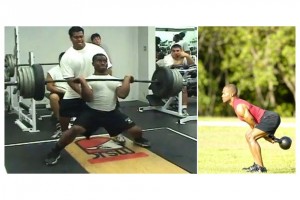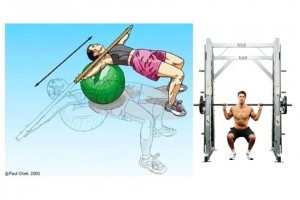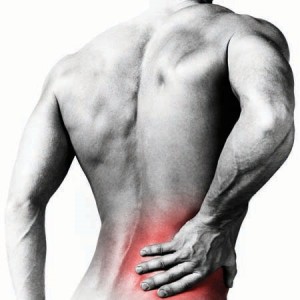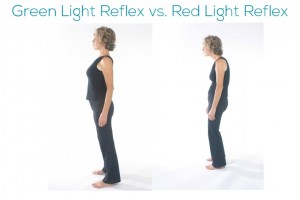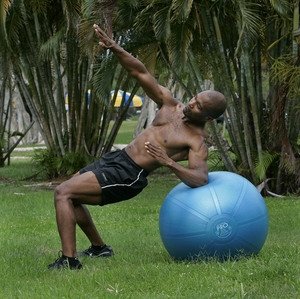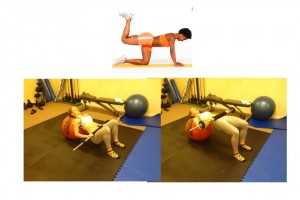What Is Corrective Exercise?
admin
Filed under Corrective Exercise
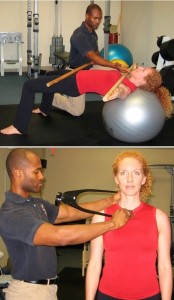 Often times I get asked if one form of exercise is better than another and my common answer is I don’t know. In order for me to give you the best answer that I can I have to know more about your body, your posture, your movement skills or lack of movement skill, and prior injury history. It is only through gathering this information that I can give you the best answer about what the best exercise is for you. This is the nature of corrective exercise it is designing exercise programs that not only improve how you look but how you function and how you feel.
Often times I get asked if one form of exercise is better than another and my common answer is I don’t know. In order for me to give you the best answer that I can I have to know more about your body, your posture, your movement skills or lack of movement skill, and prior injury history. It is only through gathering this information that I can give you the best answer about what the best exercise is for you. This is the nature of corrective exercise it is designing exercise programs that not only improve how you look but how you function and how you feel.
Fix Your Nagging Shoulder By Stretching The Pec Minor
admin
Filed under Corrective Exercise
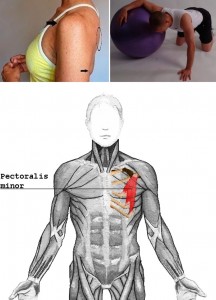 A dead give away that your pec minor is tight is that your shoulders will protrude forward. The head of the humerus (arm bone) will stick out and a bump will appear in the front of the shoulder. In this position every movement that is done with the shoulder will produce irritation and over time will create chronic degenerative changes in the joint.
A dead give away that your pec minor is tight is that your shoulders will protrude forward. The head of the humerus (arm bone) will stick out and a bump will appear in the front of the shoulder. In this position every movement that is done with the shoulder will produce irritation and over time will create chronic degenerative changes in the joint.
Movement: Garbage In, Garbage Out
admin
Filed under Corrective Exercise
Studies have shown that it takes 3 to 500 repetitions to develop a movement pattern. To undo the same pattern it takes 3 to 5,000 repetitions. When you consider that poor movement increases the likelihood of injury and degenerative conditions, developing correct movement patterns from the start becomes even more important.
Core Strength vs. Core Stabilization
admin
Filed under Corrective Exercise
They are not one in the same. Stabilization must come before strength. Building strength without the matching stability is like having a Ferrari engine in a Volkswagen frame. You will be fine going straight ahead but you will have major problems when making turns. And life is all about navigating the turns.
Ab Training 101
admin
Filed under Corrective Exercise
 Performing more than 15 reps per set on your abdominal exercises will most likely reduce the effectiveness of the exercises here is why:
Performing more than 15 reps per set on your abdominal exercises will most likely reduce the effectiveness of the exercises here is why:
The muscle fibers are composed of primary fast twitch fibers so the abdominal muscles are classified as phasic not tonic.
Taken from the book The Poliquin Principles: Successful Methods for Strength and Mass Development
Cause of Low Back Pain
admin
Filed under Corrective Exercise
Most low back pain originates in the soft tissues.It makes sense to begin with the least risky, least invasive treatment available, then escalate if necessary. And that treatment is medical massage therapy. If it isn’t effective, the other treatments are still available. But if it is effective, a lot of time and pain and risk and money have been saved. Low back pain caused by soft-tissue problems is likely to originate in one (or more) of three different locations:
1) Quadratus lumborum and its neighbors. Quadratus lumborum is the muscle between the bottom rib and the top of the pelvis; it is a key muscle in coordinating upper and lower body movements. It is a deep muscle, and is situated underneath (deep to) the lumbar paraspinal muscles. If there are problems in quadratus lumborum, there are also likely to be problems in those thick muscles near the surface on either side of the spine. In addition, muscle problems are invariably accompanied by connective tissue problems. This area, unprotected as it is by any skeletal structures, is thick with connective tissue: the thoracolumbar fascia, the gluteal aponeurosis, and other tough connective tissue cover and surround these muscles.
2) The buttock muscles. These include the three gluteal muscles (gluteus maximus, medius and minimus), and the deep lateral rotators of the hip, especially piriformis.
3) Iliopsoas. This is the primary hip flexor (its chief assistant being rectus femoris), running down through the abdominal cavity and the groin to the lesser trochanter. But its origins, meaning in this case its anchor points, are the inner surface of the ilium (iliacus muscle) and the transverse processes of the lumbar vertebrae — which means that every lifting of the leg pulls on the pelvis and the lumbar spine.
Certainly other muscles can and do get into the low back pain act, but these three muscle groups, all very heavily involved in the day-to-day demands we make on our bodies, are the chief sources. Careful examination by a skilled and knowledgeable clinical massage therapist can find the trouble spots, and appropriate treatment can yield relief that many people had despaired of finding.
Green Light Reflex vs. Red Light Reflex
admin
Filed under Corrective Exercise
The Red Light reflex is a response to distressful events. It is a protective response to negative events that threaten us, from vague apprehensions to gnawing anxieties, to overt dangers.
The Green Light reflex is the opposite of the Red Light reflex, as both a muscular activity and an adaptation function. The Red Light reflex contracts the anterior flexor muscles, curling the body forward; the Green Light reflex contracts the posterior extensor muscles, lifting and arching the back in the opposite direction.
Somatics: Reawakening the Mind’s Control of Movement, Flexibility, and Health by Thomas Hanna
Body Mechanics in Health, Fitness and Performance
admin
Filed under Corrective Exercise, Pearls Of Wisdom
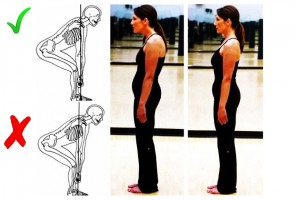 The body has a very sensitive survival mechanism any threat to survival creates a stress response. Including poor posture and poor body mechanics. Poor body mechanics can mean training with incorrect technique, sitting in the wrong chair, driving in the wrong car, wearing the wrong shoes or using your body in any way that promotes poor mechanics.
The body has a very sensitive survival mechanism any threat to survival creates a stress response. Including poor posture and poor body mechanics. Poor body mechanics can mean training with incorrect technique, sitting in the wrong chair, driving in the wrong car, wearing the wrong shoes or using your body in any way that promotes poor mechanics.
Improving posture and body mechanics can be a very powerful step in reducing your bodies stress response and allowing your body to use energy that would otherwise be used to fight stress. Your body’s energy can instead be used towards more important things such as improving health, energy levels, weight loss and body transformation.
Breathing and Core Strength: Make the Connection
admin
Filed under Corrective Exercise, exercise
Core stabilization and respiration during high performance activity requires that the respiratory mechanism, inner unit and outer unit function properly and in sequence with each other. The activation of the outer unit is inversely related to the action of respiration and diaphragmatic excursion. Therefore the more the outer unit is contracted the less efficient breathing becomes. Therefore to insure efficient ventilation during high performance activity, there must be sufficient strength in the inner unit to allow for use of respiratory mechanics.
In plain English, what the above statement means is this; If your inner core is weak, the body will compensate by using the outer core to stabilize the spine. When this happens breathing is compromised, which causes a stress response in the body. Because breathing will always override stabilization, a tug-of-war between breathing and stabilizing occurs. This causes the body to waste energy and ultimately lose performance and in most cases get injured.
Therefore to maximize both breathing and performance, both systems need to be functional separately and also when working together. #breathingandcoreareone
PE F.A.D Buster|Open Chain Exercises and Glute Development
admin
Filed under Corrective Exercise, Fitness
“Trying to build a butt with fire hydrant kicks is like trying to sculpt marble with an emory board.”
Terrence Thomas
The gluteus maximus muscles is designed for power and large movements such as squatting, running, jumping, and lunging. Therefore to develop the glutes, these movements must be performed. Whose butt would you rather have? A marathoner’s or a sprinter’s like Flo-Jo’s? One of the major differences in the two “runners” is the intensity and muscle fiber recruitment that each of them performs. The marathoner moves in a slow and steady pace utilizing slow twitch muscle fibers. On the other hand sprinting activates the fast twitch fibers, which the glutes are predominantly composed of. This puts the butt in a perfect position to respond favorably. The squat and lunge patterns are the best for developing and shaping the butt. All squatting and lunging is done in a closed chain pattern (i.e. the feet are on the earth and the leg is moving the body away form the earth). This allows the glutes to be used in the exact way in which they are designed. Closed chain exercises for the lower body also promote optimal neural drive in the muscle. to learn more about neural drive, refer to my neural drive article in RxMuscle that explains it all. #neuraldriveincreasemuscletone #closedchainexercise

